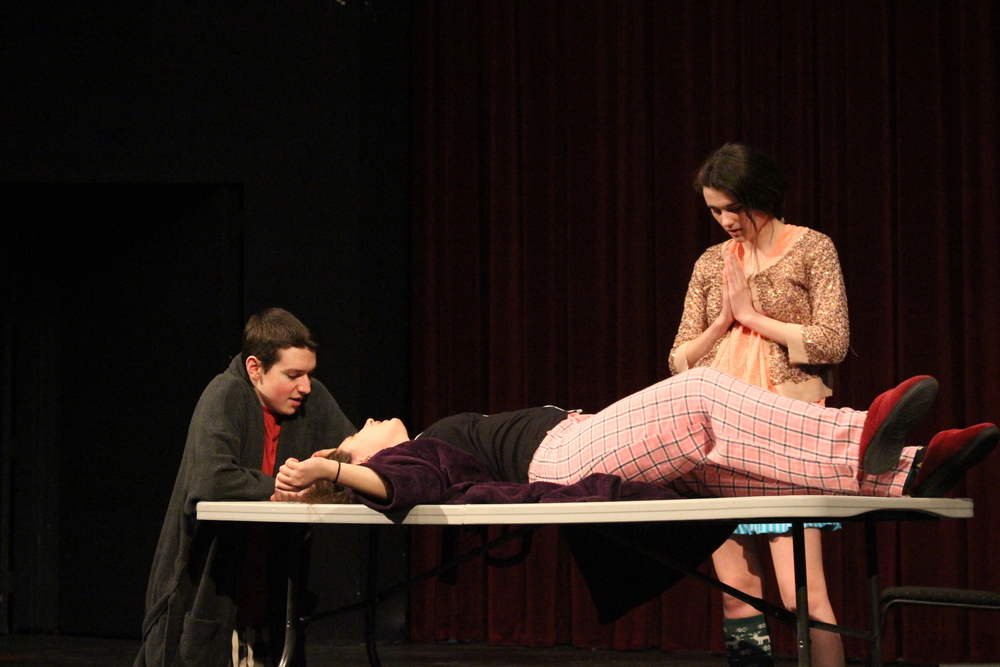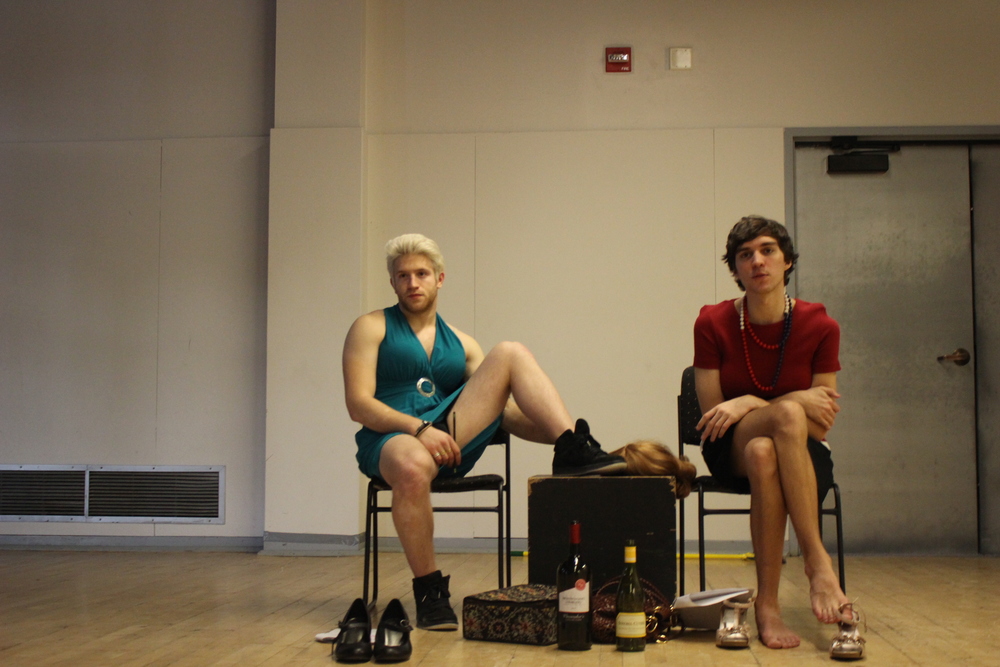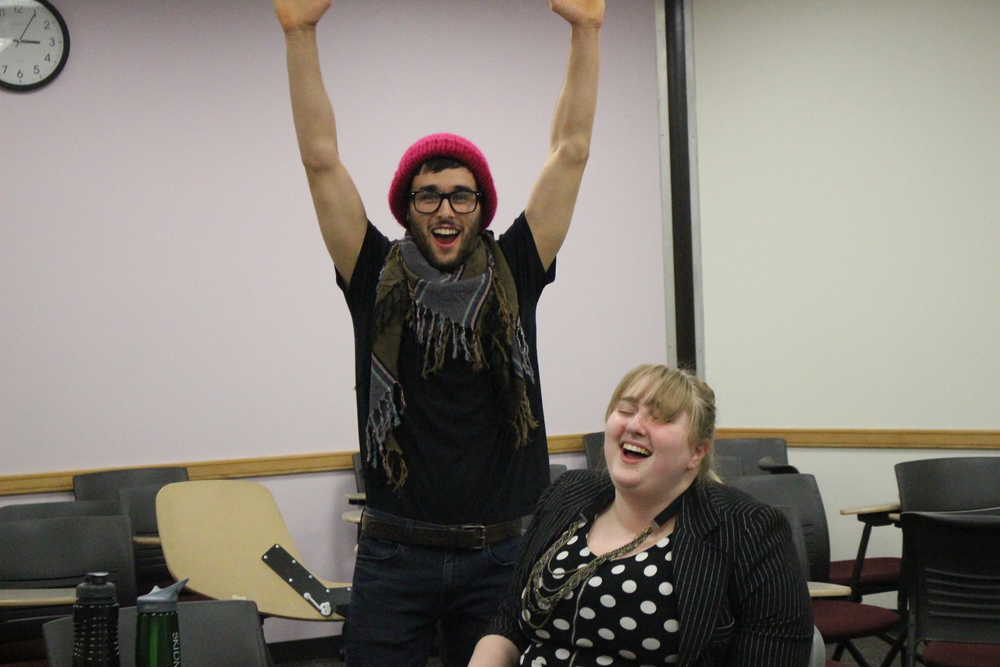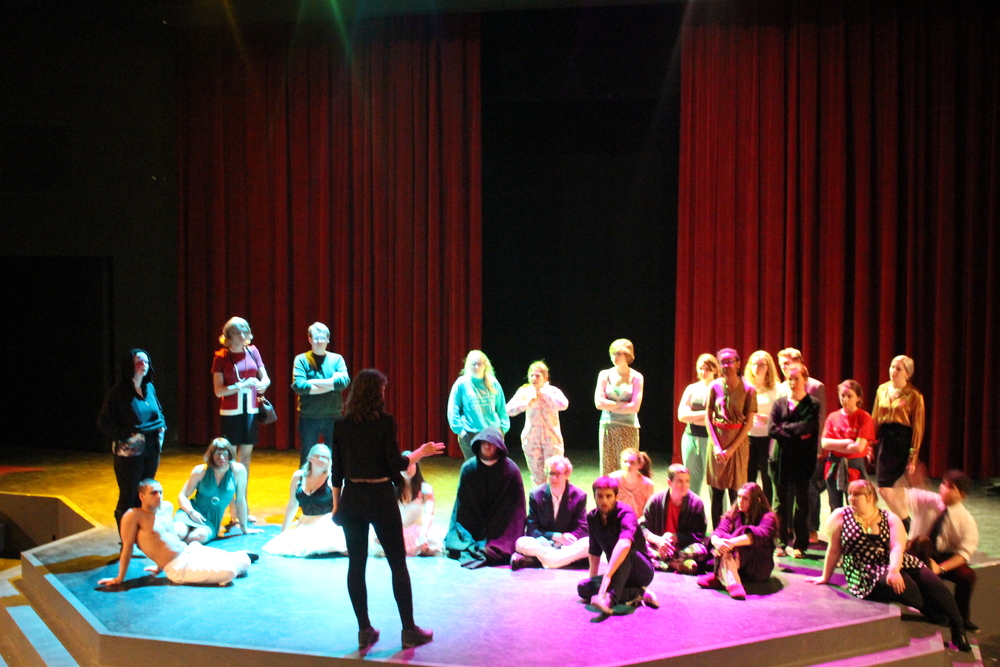
A Matter of Time
By: Sam Grant ’18
It usually takes a village to put up a production in the JKB Theater. Costumes need to be designed, lighting needs to be perfected, and scripts need to be thoroughly studied—just to name a few pieces of the puzzle. This year’s production of Together We Can Do So Much More went about business just as usual with the entire process of writing, casting, and performing plays spanning a mere 24 hours. Led by the producing duo of Hallie Christine ’15 and John Noble Barrack ’15—as well as stage manager Greer Duckworth ’15—the festival kicked off like clockwork at 9pm on Friday, March 6th. Through the night, playwrights toiled away to create eight original plays that would begin to come to life in just a few short hours. “We gave specified prompts to the writers in order to diversify the material,” Barrack adds. “I was a writer for the event last year, and had so much fun and learned a great deal from the process.”

The directorial squad congregated bright-eyed and bushy-tailed on Saturday morning, eagerly awaiting pitches from the writing team. The writers concisely described the pieces they had been bustling away with, and from that point on, the plays were in the hands of the eight directors. The next wave of panic approached as actors filed into the mainstage for their auditions, their moment to blow the directors away with their raw, diligent, and professional talent. In the spirit of the 24 Hour Play Festival, auditions were not to go over a minute long. The sheer intensity of talent in the room was nearly too much for the directors to handle, ranging from Margot Friedman ’18 reciting the delicate prose of wordsmith Childish Gambino, to Rachael Thomeer ’18 recalling, in her words, “all fifty states in 11.9 seconds, if you’re counting. I’m not. But if you are.” There was a tremendous level of variety within the audition pool, which spoke to the overall spirit of the day. As Christine points out: “The 24-Hour Play prioritizes inclusivity, which is why its auditions happen in that format. I can say that the audition process, and really the whole day, was a celebration of theater. In that regard, all auditions should have that same joy!”

Before long, the plays were cast and the groups had dispersed to their individual rehearsal rooms to get to work. As actors studied their lines with one eye and watched the clock with the other, directors were in constant contact with the production team. While it was most definitely an exhausting stretch of time, everyone involved with the production seemed to have built up a communal adrenaline rush over the course of the day—and before long, that infectious energy began to spread to the rest of campus. According to Barrack, he and Christine made it a point to“advertise the show more widely as more than just a cool thing the theater department does. We wanted to include more people from more parts of the Skidmore family.”
A lively crowd filled the mainstage as the producers got the ball rolling, and from then on out, it was a night of pillow fights, David Bowie wigs, and Tinder matches made in heaven. “One of the most memorable moments,” Christine notes, “was right before the house opened and the actors were milling about the theater, getting ready for the show. Our job, by that point, was pretty much done, so I could just stand and marvel at how incredible it was to see how much had been accomplished in such a short time.” The span of the 24 hours was an opportunity for students to experiment, and their willingness to do just that (as well as the committed leadership that oversaw the whole process) made for a vibrant final product truly that justified its own name.

